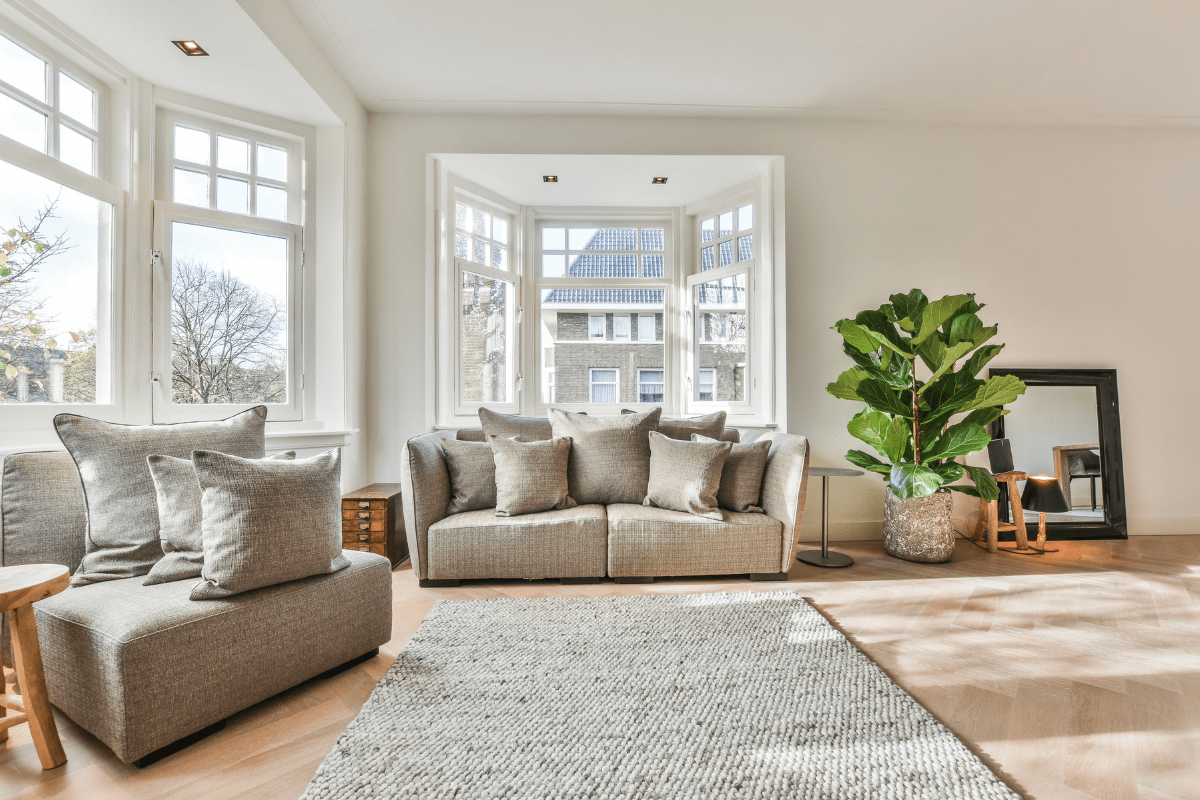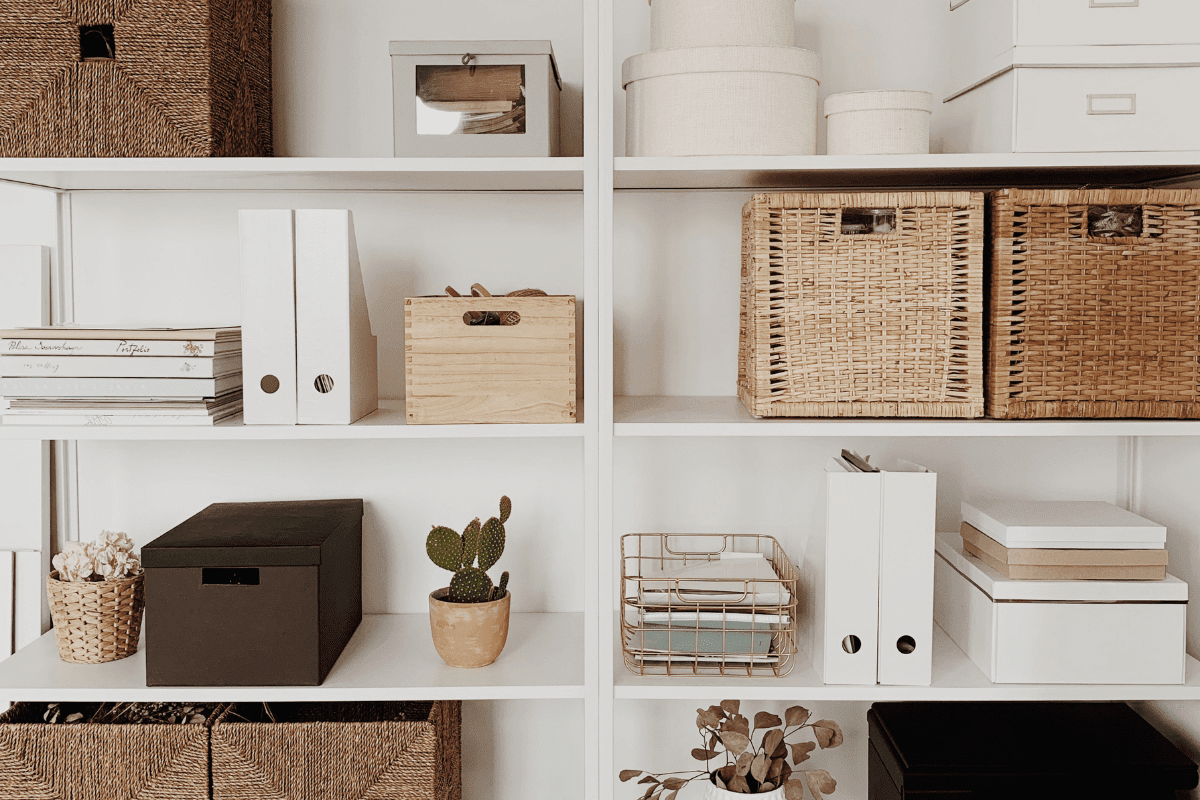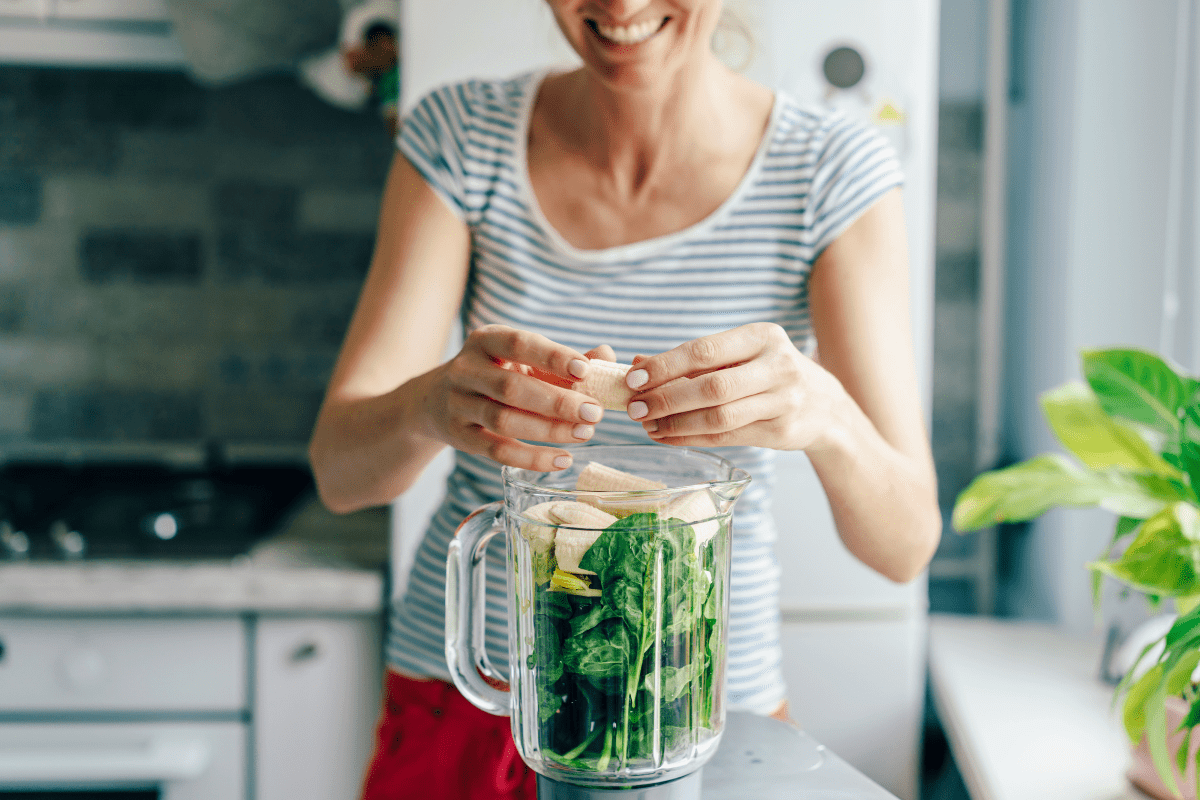Cleaning an entire house can feel like climbing Mount Everest in flip-flops… while blindfolded. The sheer scope of tasks ahead often leaves us paralyzed, wondering where to start and how to maintain momentum without losing our minds. The secret isn't working harder (because honestly, who has the energy for that?), it's working smarter with a systematic, room-by-room approach that maximizes efficiency while minimizing the overwhelming urge to just close your eyes and pretend the mess doesn't exist.
Why your current cleaning strategy isn't working
Most of us approach house cleaning like we're playing whack-a-mole with dirt. We see a mess, we clean it, then we wonder why everything looks terrible again by Tuesday. This scattered approach wastes time and energy because we're constantly backtracking and re-contaminating areas we've already cleaned.
The real game-changer is understanding that cleaning has an optimal order, just like baking a cake or assembling IKEA furniture (except way less likely to end in tears). When you clean from top to bottom and follow a logical room sequence, you prevent the frustrating cycle of re-cleaning the same spots over and over.
The strategic cleaning order that actually makes sense
Your cleaning order should build momentum while preventing re-contamination. Start with bedrooms because they're typically the least contaminated areas, helping you build confidence and energy for the more challenging spaces. Think of it as warming up before a workout… except the workout involves battling soap scum.
Optimal room sequence:
- Bedrooms (confidence builders)
- Living areas (moderate challenge)
- Kitchen (the final boss)
- Bathrooms (save worst for last)
- Hallways and entryways (victory lap)
This sequence works because you're gradually ramping up the difficulty while your energy and momentum are still strong. By the time you reach the kitchen and bathrooms, you've already accomplished so much that tackling the tough stuff feels manageable rather than impossible.
Essential supplies that won't break the bank
Before diving into specific rooms, let's talk about your cleaning arsenal. You don't need a closet full of specialized products that cost more than your monthly coffee budget. A few quality, multi-purpose tools will handle most cleaning tasks effectively.
Microfiber cloths are your best friend here. Studies show these magical little rectangles can remove up to 98% of bacteria and 93% of viruses using only water. That's like having a superhero in cloth form, minus the cape and dramatic backstory.
Core cleaning kit essentials:
- Microfiber cloths (6-8 minimum)
- All-purpose cleaner or white vinegar
- Glass cleaner for streak-free results
- Disinfectant spray for high-touch areas
- Cleaning caddy for easy transport
- Vacuum with attachments
The cleaning caddy is particularly crucial because it prevents the soul-crushing experience of walking back and forth to retrieve supplies. Nothing kills cleaning momentum faster than realizing you left the glass cleaner in the kitchen while you're trying to clean the bathroom mirror.
Time-saving strategies that actually work
The two-cloth system is a game-changer that most people overlook. Use one cloth for surfaces that touch food or faces, and another for everything else. This prevents cross-contamination and reduces the need for multiple products, which means less time spent switching between cleaners and more time actually getting things done.
Another sanity-saving strategy is the "spray and walk away" method. Apply cleaners that need dwell time (like bathroom sprays or kitchen degreasers) at the beginning of your cleaning session, then work on other tasks while the chemicals do their magic. It's like having a cleaning assistant that works while you're busy elsewhere.
Bedroom cleaning: Building momentum with easy wins
Start your cleaning marathon in the bedrooms because they're typically the cleanest spaces in your home. This isn't about being lazy… it's about psychology. Success breeds success, and starting with an achievable goal builds the momentum you'll need for the challenging rooms ahead.
The first step is making the bed, which instantly makes any room look 50% cleaner. It's like putting on makeup… everything else automatically looks better by comparison. Plus, a made bed gives you a clear workspace and a sense of accomplishment that propels you forward.
The bedroom blitz method
Declutter surfaces first using the one-touch rule: each item gets picked up once and goes directly to its proper home. Don't create "sorting piles" that you'll deal with later, because let's be honest, later never comes and those piles just migrate around your house like lazy houseguests.
Dust from top to bottom, starting with ceiling fans and light fixtures, then working down to furniture surfaces. For wood furniture, use wood-specific products and work with the grain. Your furniture will thank you, and you'll avoid those streaky mishaps that make everything look worse than when you started.
Bedroom cleaning checklist:
- Make bed immediately
- One-touch decluttering rule
- Dust ceiling fans first
- Clean furniture with appropriate products
- Quick closet reset only
- Vacuum including baseboards
Don't attempt a full closet organization during your house cleaning session. Save major closet overhauls for dedicated organizing days when you have three hours and the emotional fortitude to decide whether you'll ever wear those jeans from 2018 again.
Living room: Conquering the family gathering spot
Living rooms accumulate the most daily debris because, well, that's where life happens. Remote controls migrate to strange places, throw pillows develop mysterious stains, and somehow there's always a random sock that nobody claims ownership of.
Start with a rapid 15-minute reset using the one-touch rule. Books return to shelves, remotes to their designated spots (if you can remember where that is), and random items to their respective rooms. This creates a clean slate and prevents you from cleaning around clutter, which is about as effective as trying to vacuum through a obstacle course.
Upholstery and electronics need special attention
Vacuum all upholstered furniture, including cushions and those mysterious crevices where snacks go to die. Use appropriate attachments for different textures, and don't forget to flip those cushions if they're reversible. You'll be amazed at what treasures (and horrors) you'll discover.
Electronics require a gentle touch. Use a dry microfiber cloth or specialized electronics cleaning wipes, and avoid liquid cleaners on screens and components. That expensive TV doesn't need a shower, despite what your enthusiasm might suggest.
The coffee table deserves special attention because it's probably doing triple duty as a dining table, desk, and storage unit. Clear it completely, then clean with the appropriate surface cleaner. Glass tables need streak-free glass cleaner, while wood requires wood-specific products that won't leave you with a sticky mess.
Kitchen cleaning: The final boss battle
Kitchens are where cleaning goes to test your patience and resolve. Between grease splatter, food residue, and that mysterious sticky spot near the stove that defies all known cleaning products, kitchens require a strategic approach and possibly some motivational music.
Start by loading the dishwasher or filling the sink with hot, soapy water. This allows dishes to soak while you tackle other tasks, making everything easier later. It's like marinating meat, except with dirty plates and significantly less delicious outcomes.
Appliance attack plan
Clean appliances from top to bottom, starting with the refrigerator exterior. For the microwave, try the steam-clean method: heat a bowl of water with lemon slices for two minutes, then wipe clean. The steam loosens grime naturally, and your microwave will smell like a citrus grove instead of last Tuesday's leftovers.
Kitchen cleaning priorities:
- Load dishwasher or start soaking
- Refrigerator exterior first
- Microwave steam-clean method
- Counter degreasing near stove
- Cabinet fronts and handles
- Sink scrub with baking soda
Don't forget the area above your stove where grease accumulates like it's training for the Olympics. This spot is often overlooked but can make your entire kitchen look grimy even when everything else is spotless.
Counters and sink transformation
Clear all countertops completely because you can't properly clean around a toaster, coffee maker, and that mysterious appliance you got for your wedding but have never used. Use a degreasing cleaner, paying special attention to prep zones and areas around the stove where splatter loves to hide.
For the sink, scrub with baking soda for natural abrasion, then rinse and dry. Polish faucets with a microfiber cloth for a streak-free shine that makes you feel like you have your life together, at least temporarily.
Bathroom cleaning: Tackling the toughest challenge
Bathrooms are the final frontier of house cleaning, combining moisture, bacteria, and soap scum into a perfect storm of cleaning challenges. The key is approaching this systematically rather than randomly spraying things and hoping for the best.
Start with the toilet because getting the worst task out of the way first is like ripping off a bandage… painful but necessary. Use toilet bowl cleaner inside the bowl and let it sit while you clean other areas. This dwell time is crucial for breaking down buildup and making your life easier.
Shower and tub strategy
Spray shower and tub surfaces with bathroom cleaner at the beginning of your bathroom session. This gives the cleaner time to work on soap scum and mineral deposits while you tackle other tasks. It's like having a cleaning assistant that works while you're busy elsewhere, except this assistant actually shows up and doesn't eat your leftovers.
Bathroom cleaning sequence:
- Toilet bowl cleaner application
- Spray shower/tub surfaces
- Clean mirrors and glass
- Wipe vanity and organize
- Return to shower/tub scrubbing
- Floor mopping with disinfectant
For mirrors and glass shower doors, work quickly before the cleaner dries. Use a squeegee on shower doors to prevent streaking and achieve that hotel-bathroom level of cleanliness that makes you feel fancy.
Vanity and floor finishing touches
Clear vanity countertops completely, then clean with appropriate disinfectant. Organize toiletries as you return them because a cluttered vanity makes even a clean bathroom look messy. Wipe down cabinet fronts and handles, which harbor more bacteria than most people realize.
Floor cleaning comes last because you've probably dripped cleaner and tracked debris during the process. Sweep or vacuum first, then mop with disinfectant floor cleaner. Pay attention to areas around the toilet base and behind the door where debris collects like it's hiding from you.
Common mistakes that waste your time and energy
The biggest cleaning mistake is using the wrong products for surfaces. Glass cleaner on wood, all-purpose cleaner on natural stone, or bleach on colored fabrics can cause damage that requires additional work to fix. When in doubt, test in an inconspicuous area first… your furniture will thank you.
Cleaning in the wrong order is another momentum killer. Mopping before dusting means you'll need to mop again, and cleaning wet tasks before dry ones creates extra work. Always work from top to bottom and complete dry tasks before wet ones.
Maintenance mistakes that make everything harder
Waiting too long between deep cleaning sessions makes each session exponentially more difficult. It's like ignoring your car's maintenance schedule… eventually, you'll pay for it with time, effort, and possibly some creative vocabulary.
Neglecting high-touch areas is a missed opportunity because these surfaces harbor the most bacteria and make the biggest visual impact when cleaned. Light switches, door handles, and remote controls need regular attention, even if they don't look obviously dirty.
Creating a sustainable cleaning routine
The goal isn't to achieve cleaning perfection… it's to create a system that maintains a comfortable level of cleanliness without consuming your entire weekend. A thorough room-by-room cleaning session once a week, combined with daily maintenance tasks, keeps things manageable.
Daily maintenance doesn't mean doing everything every day. Make beds immediately upon waking, load the dishwasher after meals, and do a quick evening reset. These small actions prevent major cleaning sessions from becoming overwhelming weekend projects that require mental preparation and possibly a pep talk.
Building momentum and maintaining motivation
Start with the easiest room to build confidence and momentum. Success breeds success, and you'll find energy for more challenging areas after experiencing some early wins. It's like starting a workout with easier exercises… you warm up your motivation along with your muscles.
Accept that "good enough" is actually good enough. A thoroughly cleaned house is better than a few perfectly detailed rooms with the rest neglected. Perfectionism is the enemy of progress and the reason many people give up halfway through.
Remember, the key to long-term success lies in consistency and systems, not intensity. This systematic approach transforms house cleaning from an overwhelming chore into a manageable process that supports your daily life rather than consuming it. Your future self will thank you for developing these efficient habits that make maintaining a clean home feel achievable rather than impossible.





